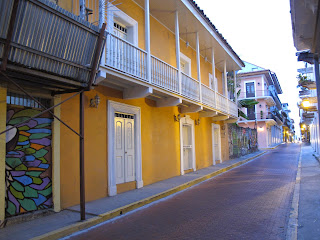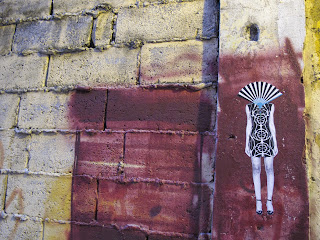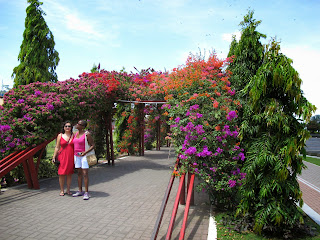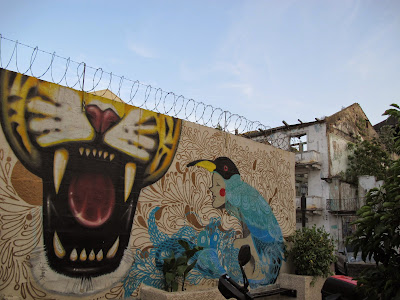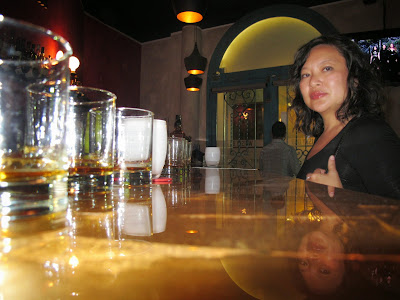To be continued...
World of Good
The meandering travels of Michelle & Colin while taking some rest from the corporate grind... Which only grinds us because we let it.
Monday, 18 January 2016
Wednesday, 3 June 2015
The Park Ate My Wallet
Lake Arenal, COSTA RICA
Feb.28-Mar.1, 2015
You want to charge me WHAT!? to walk in the forest?!?!!
Costa Rica's renowned fantastic rainforests were within my hugging arms for the next week or so, and the fellow at the entrance booth wanted to charge $24 US to hike on a trail. $32 US with a guide, which he strongly recommended. It was completely socked in and raining to boot, so what would a guide be able to point to anyway!?? I was SO mad.
But first: Colin arrived!!
I was back in Costa Rica now, with a couple days of rest and relaxation in Liberia, the main city in northern Costa Rica. Colin gallantly picked me up at the funky purple place where I had been staying, recuperating from a butt-kicking cold - darn AC in Panama City! - which had me mostly sleeping, sitting quietly, and drinking a boiled tea made of fresh ginger, sweet lemons, honey and lemongrass.
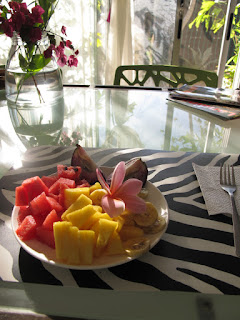 |
| Breakfast fruit |
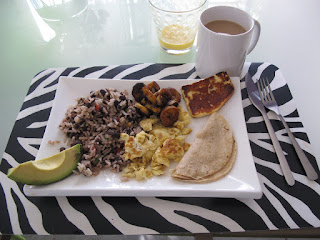 |
| Typical Costa Rican breakfast |
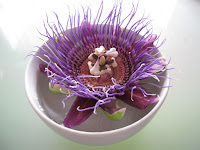 |
| Costa Rican flora |
We were now enjoying the temporary luxury and freedom of a rental car, and aimed east across the warm dry dry savannah towards Lake Arenal, where the maps promised the much-anticipated rainforest. In addition to my cold, my nose was also spewing blood, I assume as a result of going from 100% to 0% humidity. Gradually the colours did morph from dusty browns and yellows to greens, white windmills and a blue blue lake.
We stayed at a nice place halfway along the north side of the lake for a night, where we drank gin and tonic on the warm balcony while watching bouts of rain fall onto the lake, and marvelling at the swifts fly about and dive like mad.
 |
| Watching the storms |
 |
| Storms look even better through gin-coloured glasses |
And now, after having completed the rest of the journey around the north side of the lake, we were all suited up, ready for a hike in the rainy rainforest, gaping at the young man who told us it would be $24 US to do so. Each. For this trail only.
The billboards should have been a dead give-away: zip-line this! bridge-walk that! waterfalls! hot springs resort! Plus we were still outside the national park boundary. But, a stop at another set of trails, this time within the park, still wanted $10 US each for spectacular views of the Arenal Volcano. In the fog...
We drove instead to our abode for the next couple nights, hoping for an early afternoon check-in and some warm lunch in La Fortuna - located on the east side of the Arenal Volcano, which sat at the east end of the lake, and therefore would be free of rain because the clouds were all stuck up on the volcano, right? I stewed in the passenger seat, arms folded, staring at the rain-blurred windshield, and contemplated the freedom of Canada's national parks where I play regularly, and which, until now, I have completely taken for granted.
Canadian National Parks
Parks Canada is a government agency which is given federal tax dollars every year to, according to their mandate, "protect and present nationally significant examples of Canada’s natural and cultural heritage, and foster public understanding, appreciation and enjoyment in ways that ensure the ecological and commemorative integrity of these places for present and future generations" [1].
"Heritage" sites include our 44 national parks (8 of which are also UNESCO world heritage sites) [2], national historic sites, and marine conservation areas. Canada’s was the first national park system in the world, formed by Sir Wilfred Laurier's government in 1911; the first national park itself in Canada was created in 1885, to protect 26 square km around the natural hot springs near Banff, AB [3]. The "special-ness" of Canadians and their parks can be demonstrated by the coming about of the first northern national park in 1976:
While flying over Baffin Island with his wife Aline, an awestruck Jean Chrétien [former Canadian Prime Minister 1993-2003] resolves to make a park here for her. Chrétien later explained, “When I returned to my office … I consulted the Minister of Indian Affairs, who was myself, consulted the Minister of Northern Affairs, who was myself, and consulted the minister responsible for parks, who was myself, and they all agreed on the matter.” As a result, Auyuittuq National Park is created. [3].A visitor - Canadian or foreign - pays a fee from $0 to less than $10 to spend a day in the park (depending on the park), or under $20 for a family/group of 7 or less. Many parks have annual passes. Alternatively, $68 gets an individual annual pass for access to over 60% of all parks, or $136 for an annual family/group pass (all of the above in Canadian dollars) [4]. A pass provides unlimited access to all trails and most facilities for the duration of the pass.
Parks Canada publishes annual Parks visitors guides for each area across the country - free both online and in print - showing maps and descriptions of popular trails, camping areas, visitor centres and other facilities.
Many of the national park bathroom facilities with which I am familiar (ie. western Canada) are typically clean outhouses, with metal lockable doors, rarely out of toilet paper, complete with a wall-mounted hand sanitizer unit. Some remain open and cared for throughout the year at popular winter destinations.
So how is Canada able to do this? What does Costa Rice do instead?
I just wanted to go walk in some rainforest, see some different kinds of trees and animals than what I do in the Rocky Mountains or Alberta Boreal Forest. Now, I was going to have figure out why this was going to cost me a tree-hugging arm and a hiking-leg.
Sunday, 17 May 2015
A Final Tribute-y Farewell to Panama - In Mostly Photos
It has been a bit of a hiatus from posting - while I "write" regularly, it's often difficult to publish a post (internet availability, time availability to deal with the finicky blogger tool, or dealing with a laptop that crashes regularly for a cause I cannot ascertain). I often get comments such as "isn't a blog supposed to be a daily or regular post of real time stuff"? Maybe some are, but not this one. However, be assured that the writings are timely - the time to production (along with some general editing) is sometimes just slow.
Panama City, PANAMA
Feb.21-26, 2015
I don't think I'll ever run out of things to say about Casco Antiguo... For example, I could go on about how the gradual "gentrification" of the area brings not only character, but snobbery as well. A quick stop inside the lovely-looking fancy American Trade Hotel coffee shop (ie. the ex-gang headquarters), so Jeannie could grab a muffin, left her standing for a few minutes waiting to pay, while the "gentleman" behind the counter completely ignored her. She finally threw some change on the counter and said "I'm taking this", holding up the muffin, and walked out. But I'll spare everyone the lengthy essays and leave you a few final photos instead.
The Cafe Coca Cola has been there since 1875, as I suspect have many of its customers - dapper old gents reading the papers, talking politics, observing the clientele. It would have had a different name (Coca Cola didn't come onto the market until the later 1800's), but otherwise I swear it is the same place as 1875. For five bucks, you can get a full "Panamanian" meal - fish/meat with rice, beans, plantains, rounded out with a bit of fresh salad, and honestly, probably the best cup of regular coffee to be had in Panama City. We came back a few times.
In this current period of Casco Antiguo's transition, the snobbery is mostly kept in check with the localized decor, among other things. I wonder if one will eventually triumph over the other, or if, true to its existing charm, both can continue to co-exist.
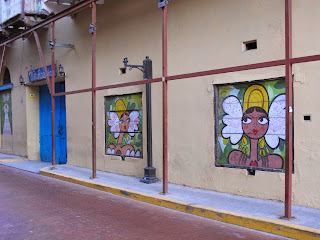
The Fish Market was a fascinating smelly array of the coolest fish assortments and displays imaginable. When I asked the the lady in the photo, from whom I bought my ceviche, if she minded if I took a photo, she became quite shy. As a result, I didn't feel comfortable randomly photographing the assortment of fish stands - how would I feel if a bunch of foreigners showed up at desolate cubicle-land where I used to work, photographing my cube-mates and I extensively while we worked?
Our last night out together before going our separate ways began at the Whiskey Bar. Jeannie and I each took The Whiskey Taste Test: three glasses of whiskey - one drunk neat, one with ice, one with a dash of water. We talked with the bartender extensively about each one - the smells, the tastes, the after-tastes... In the end, it was revealed all three were the same Johnnie Walker!!! But lesson learned: the way it's served makes all the difference... And you've gotta be smarter than the whiskey bottle.

Panama City, PANAMA
Feb.21-26, 2015
I don't think I'll ever run out of things to say about Casco Antiguo... For example, I could go on about how the gradual "gentrification" of the area brings not only character, but snobbery as well. A quick stop inside the lovely-looking fancy American Trade Hotel coffee shop (ie. the ex-gang headquarters), so Jeannie could grab a muffin, left her standing for a few minutes waiting to pay, while the "gentleman" behind the counter completely ignored her. She finally threw some change on the counter and said "I'm taking this", holding up the muffin, and walked out. But I'll spare everyone the lengthy essays and leave you a few final photos instead.
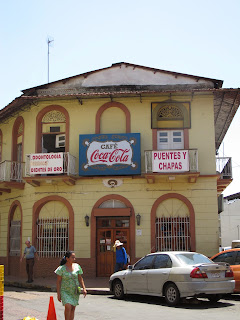 |
| Cafe Coca Cola - Rasheedah's old haunt from when she lived here |
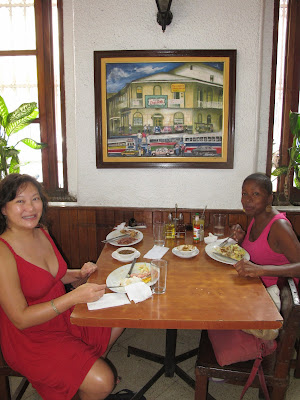 |
| Note the painting... |
The Cafe Coca Cola has been there since 1875, as I suspect have many of its customers - dapper old gents reading the papers, talking politics, observing the clientele. It would have had a different name (Coca Cola didn't come onto the market until the later 1800's), but otherwise I swear it is the same place as 1875. For five bucks, you can get a full "Panamanian" meal - fish/meat with rice, beans, plantains, rounded out with a bit of fresh salad, and honestly, probably the best cup of regular coffee to be had in Panama City. We came back a few times.
In this current period of Casco Antiguo's transition, the snobbery is mostly kept in check with the localized decor, among other things. I wonder if one will eventually triumph over the other, or if, true to its existing charm, both can continue to co-exist.
 |
| Changing of the guard Panama style |

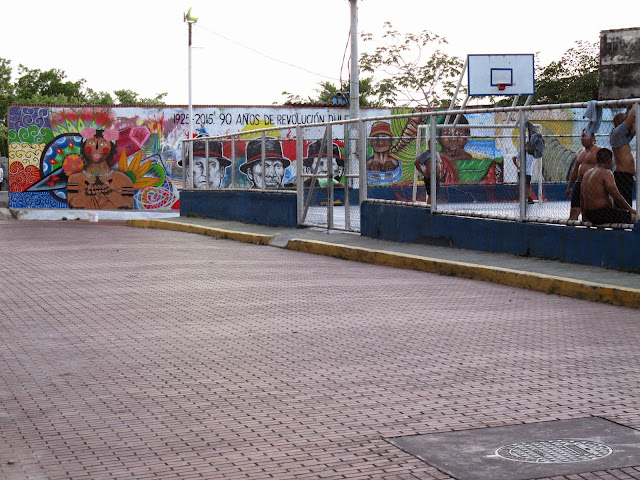 |
| Police exercise a la football |
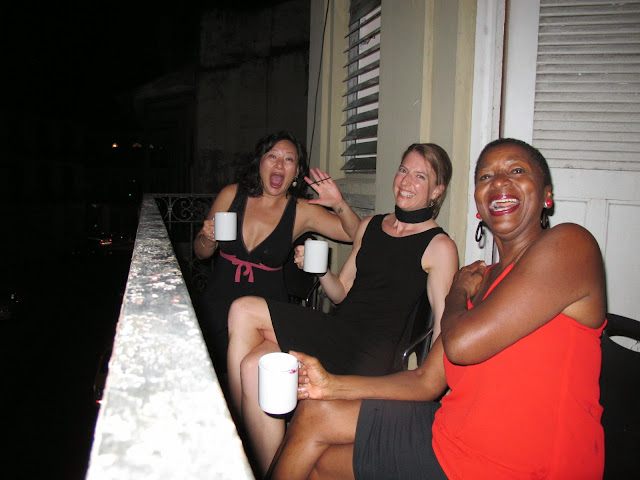 |
| Celebrating on our balcony with fancy wine glasses - Rasheedah got her Panamanian Residency! |
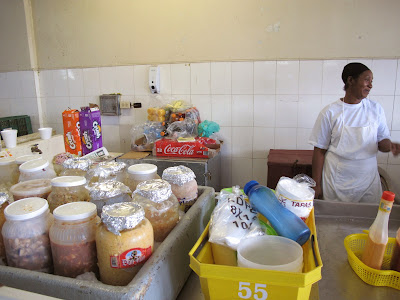 |
| One of many many ceviche stands at the Very Big Fish Market |
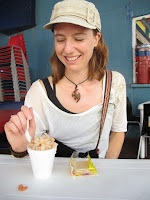 |
| Mmmmm, ceviche |
The Fish Market was a fascinating smelly array of the coolest fish assortments and displays imaginable. When I asked the the lady in the photo, from whom I bought my ceviche, if she minded if I took a photo, she became quite shy. As a result, I didn't feel comfortable randomly photographing the assortment of fish stands - how would I feel if a bunch of foreigners showed up at desolate cubicle-land where I used to work, photographing my cube-mates and I extensively while we worked?
Our last night out together before going our separate ways began at the Whiskey Bar. Jeannie and I each took The Whiskey Taste Test: three glasses of whiskey - one drunk neat, one with ice, one with a dash of water. We talked with the bartender extensively about each one - the smells, the tastes, the after-tastes... In the end, it was revealed all three were the same Johnnie Walker!!! But lesson learned: the way it's served makes all the difference... And you've gotta be smarter than the whiskey bottle.

Monday, 13 April 2015
Janus Lives Here
Panama City, PANAMA
Feb.25, 2015
Casco Antiguo (or Viejo) in Panama City is why I travel. It's one of those places that has played a number of different characters through its history, and is in the midst of transforming itself into yet another. The personalities it takes on are unique, not your typical type-cast small town, gentrified city, old town, etc. It takes on multiple facets at any given time - tough, pretty, gritty, elegant, proud, unassuming - and it's the unique combinations of those various facets that make it so facsinating, including during transition from one character to the next.
UNESCO World Heritage Site
It is also a UNESCO World Heritage Site (in conjunction with the original European settlement on the other side of the skyscraper business centre of Panama). This means it is "of outstanding universal value and meet(s) at least one out of ten selection criteria" [1] from the UNESCO criteria list. For Casco Antiguo, it is its historical/colonial urban planning (ii) and architecture (iv), along with early (although unsuccessful) attempts at establishing a 'multinational congress of the Americas' (vi), prior to UN existence, that allowed it the UNESCO World Heritage status [2]. It also means it is protected and regulated by specific guidelines in order to preserve its cultural heritage.
In addition, Wikipedia tells me the UNESCO World Heritage designation "provides prima facie evidence" [3] through the Geneva Convention that these sites are legally protected during war. How that would be enforced, or reprimanded if destruction does occur, I have no idea...
The Spaniards arrived in the early 1500's and established the first and oldest European settlement on the mainland Americas - Panama - on top of remnants of pre-Columbian settlements. After being invaded by pirates in the late 1600's and burnt down, the settlement was moved to the decidedly nicer spot of what is now Casco Antiguo, where it prospered and grew into lovely stately colonial homes, apartments, businesses and churches, as well as home to the Presidential Palace. After numerous more fires in the 1700's, and decline during urban expansion during the 19th and 20th centuries, Casco Antiguo (which translates to "Old (Historical) Quarter") faded into gang-infested poverty and disrepair. [2]
It's only been in the past 10 years or so that people have been putting money into restoring and revitalizing Casco Antiguo. Piece by piece, in apparent random order, bits of buildings are bought up by investors for eventual restoration. Word on the street is that it is most often foreign private investment and business, but the businesses do employ locals.
To find out what it was like 10 years ago, we called up a small venture called Fortaleza Tours to see Casco Antiguo through the eyes of ex-gang members, when this was their turf and most "other" people did not dare pass this way.
To find out what it was like 10 years ago, we called up a small venture called Fortaleza Tours to see Casco Antiguo through the eyes of ex-gang members, when this was their turf and most "other" people did not dare pass this way.
The Esperanza Social Venture Club was formed when five gang members from the Ciudad de Dios gang (named from the "City of God" gang in Brazil, on which the movie of that name is based) decided survival depended on cleaning up the neighbourhood rather than shooting it down. A large police raid had recently invaded their gang base in an abandoned old building, where the gangs and their families were squatting. When I asked Jafet, one of our ex-gang tour leaders, what in particular brought him to see this change, he said simply that, at the time, he had a new young daughter, and wanted to see her grow up.
 |
| Translator Saint James |
The walk took us back past our old haunt, the Nefarious Hostel Experience, at the edge of the neighbourhood El Chorrillo, which we were advised by Saint James "one does not go". Victor, the owner, was outside. To my relief, he greeted our wave and hello with a wave and hello back. To my surprise, he greeted Jafet and Chino with handshakes and a quick chat. A-ha... The decrepit hostel... Being restored... What was Victor's story...?
At the end of the walk, when I thanked each of them, I said to Jafet that I would have liked to hear more about his own personal story. I later read an article in the Huffington Post about Fortaleza, in which the author experienced the same feeling after going on the tour: "[Jafet] spoke about general conditions for poor people and gang members in the neighborhood, and how things have changed. He didn't speak too much about his own personal activities. A teardrop tattoo next to one of his eyes may be a clue to more of his past." [4]
After the tour, when conducting my regular ramblings, I saw the decrepit buildings next to the shiny sparkly restored ones with new appreciation. They were the homes of many of the ex-gang families, who squatted there, decorating and furnishing to the best of their abilities with money they might make feeding tourists, perhaps working for the new businesses in town, and the proceeds of the Fortaleza Tours. They were self-sufficient, figuring out how to get water and power of their own accord (ie. splicing wires into the town's main power lines). When a new investor came along, and decided this was the building they wanted, the families were turned out and on their own to find and set up again somewhere else.
I didn't take pictures of the squatter homes, bullet-ridden walls, stoic-looking local people going about their daily home lives - although many happily waved to us, some chatted, as we made our rounds with Jafet, Chino and Saint James.
I didn't take pictures of the squatter homes, bullet-ridden walls, stoic-looking local people going about their daily home lives - although many happily waved to us, some chatted, as we made our rounds with Jafet, Chino and Saint James.
Thursday, 9 April 2015
The Downside of Ups and Upside of Downs
Panama City, PANAMA
Feb.25, 2015
Sometimes you take a sip of a cup of coffee, and it's just SO good...
 |
| Cafe Sucre - on the left |
 |
| A most scrumptious 'tomale' at my cafe 'desk' - yucca, sweet potato, chicken, raisins, seasoning, wrapped and baked in banana leaves |
How on earth does a Panamanian baseball player end up in Lethbridge, Alberta!?! "Come and have a drink with me and I can tell you," he said.
Whoop whoop whoop go the alarm bells, fight or flight, fight or flight!? I'm a slow twitch thinker, don't ever hire me into the secret service or something that requires quick action! (He was retired from baseball, and now served in the presidential army - the presidential palace was just around the corner).
The solo female traveler connundrum: what to do when a nice man talks to you?? Part of the joy of traveling is talking with the interesting people you meet, because, (hit replay button) everyone has a story, and we all like stories. A layer of complexity is added though, when the person is of the opposite sex, or same sex depending on your persuasion. I really enjoy - and can get quite into - good conversation, but I have to be careful not to let that insinuate "I really like conversation with you in particular because I am attracted to you"... Because that can lead to the eventual "come tell me about yourself" invitation, and the inevitable reciprocal "no thanks - I blah blah blah <insert reason>". Awkward. The "I have a boyfriend" response is lame, unbelieved, and often just elicits a response of "So?".
I had already told him I was on my way to meet my friends. So after minutes of thought (in my head), which was actually only microseconds, I explained my friends and I had lots going on over our last couple days in Panama City, but were thinking of going to the Whiskey Bar around the corner later on this evening - he could come find us there as I was sure my friends would be interested in his stories about a non-English-speaking Panamanian playing baseball in Canada, and enjoy his company too. I really meant that, but I often fail to recall that subtlety is an art form typically best understood within the female species. But I really wanted to know the story!
The ladies and I never did make it out - Rasheedah joined Jeannie and I at the table in the hotel lounge where we were logisticizing (travel is regularly interspersed with bouts of logisticizing), and a box of wine was suddenly there too. We got deep into conversation about the core of our existence: being a woman in a western civilization predominantly created by men. The three of us were a group representing (not necessarily at the same time): Chinese, Black, and White; Baptist, Buddism, Catholicism, Muslim, and Spiritualism; corporate employee, self-employed, and retired; single, partnered, married, and divorced; left-brained, right-brained and combination-brained. So you can imagine, there was lots to say.
 |
| Rasheedah, Jeannie, and a mighty fine box of wine |
Anyway, today, I did not feel I could go back to the Cafe Sucre. So, I wandered the streets
to another place where bonus: I found one of those coffees where you take a sip, and it's just SO good... And I guess I will never know from the fellow at Cafe Sucre, as Paul Harvey would say, the rest of the story.
 |
| SO good... (that I bought some of the shade-grown beans - from Panama - for my mom's birthday) |
Sunday, 5 April 2015
Canal Geeking
Panama City, PANAMA
Feb.24, 2015
I have been getting seasons tickets with a group of friends to the theatre in Calgary for years - it's as much about going for dinner and wine as it is about the show. And I never want to know ahead of time what the show is or is about - it's my time not to have to plan or make decisions, I just know I'm going to the theatre to be entertained, to be given something interesting to think about.
I took the same approach with the Panama Canal. I knew its undertaking and completion were both major feats of engineering, and for that reason I couldn't come to Central America without paying homage. I didn't know much else. And that made the trip to the Canal and museum pretty 'awesome' in the true sense of the word.
 |
| Watching the ships lined up for the Miraflores Lock, Panama Canal - from the outside observation deck |
Pre-History:
 |
| Panama isthmus - http://www.billfrymire.com/gallery/ isthmus-Central-America.jpg.html |
Incidentally, before the centuries-old canal idea could come to fruition, it was home to the first completed "transcontinental" railroad (47 miles!) of the Americas, 1855 [1].
Previous considerations for the canal had been researched by engineers from Spain (1500-1800's: access to Peru and gold during the explorer days), Scotland (1690's: failed efforts to become a world trading nation), and America (1800's: access to Californian gold rush), before the French took it on (late 1800's) after their previous success with the Suez Canal in Egypt [1].
Characteristics:
Distance: 80 km
Typical transit time: 8-10 hours
Elevation change from sea level: 26 metres
Locks: 3
The alternative - sailing around Cape Horn, the southern tip of South America:
Distance: a few thousand km
Typical transit time: 2 weeks
Canal Tolls:
Cruise ships: up to $400,000 US
Cargo ships: $100,000 US on average
Sailboat/yacht: $1,200 US
Swimmer: $0.36 US*
* Richard Halliburton holds the Guinness Book World Record for lowest toll through the Canal, January 1928 [2] - it took him about 10 days, 50 hours total swimming time, and he went through the locks properly as if a ship. Because the canal tolls are weight-based, his mere man-weight resulted in his $0.36 fee.
History:
 |
| The original French Engineering team - the fellow in the second row, second from right, reminded me of my friend Joe (photo of a photo at the museum) |
In 1902–4, the United States bought the remaining assets of the Panama Canal Company, and finished the canal in 1914.
The 26 metres of elevation change from sea level, with the potential amount of blasting required to clear the way, was one of the bigger problems for the engineers to solve. The end result was the three locks installed - one on the Atlantic side, two on the Pacific side. For the really interested, Wikipedia has a good graphic showing both the route and the canal profile [3]. According to a plaque at the museum, with the amount of drilling that had to be done for the blasting, a hole could have been bored straight through the earth and 900km beyond.
 |
| Primitive equipment (photo of a photo at the museum) |
Why:
Seems to me there is always an economic reason for the presence of the USA in foreign countries. So why were they in Panama?
They were looking to build a canal across the Americas - maybe Nicaragua, or take over and hurry up the Panama construction from the French. At the time, Panama was not a country but rather a state of Columbia, and the Columbian government would not grant the US a lease on the land for building the canal. In the meantime, a little birdie told the US that Panamanian rebels were planning a revolt in order to separate from Columbia. "Mwa ha haaa," said the US, "we'll send out the US Army to support the Panamanian rebels, recognize the new Panama, then sign a treaty with them providing access to the land to complete the canal"! Panama subsequently remained a protectorate of the USA for nearly 40 years [1] - transactions in Panama today can be carried out in both American and Panamanian currency.
So THAT's why...
 |
| Owl Butterfly (mounted) - get it? |
Butterfly aside:
From the canal observation deck:
 |
| Ship just entered into the lock |
 |
| The ship, 16.5 metres lower - after less than 10 minutes - ready to head out into the Pacific |
Subscribe to:
Comments (Atom)







